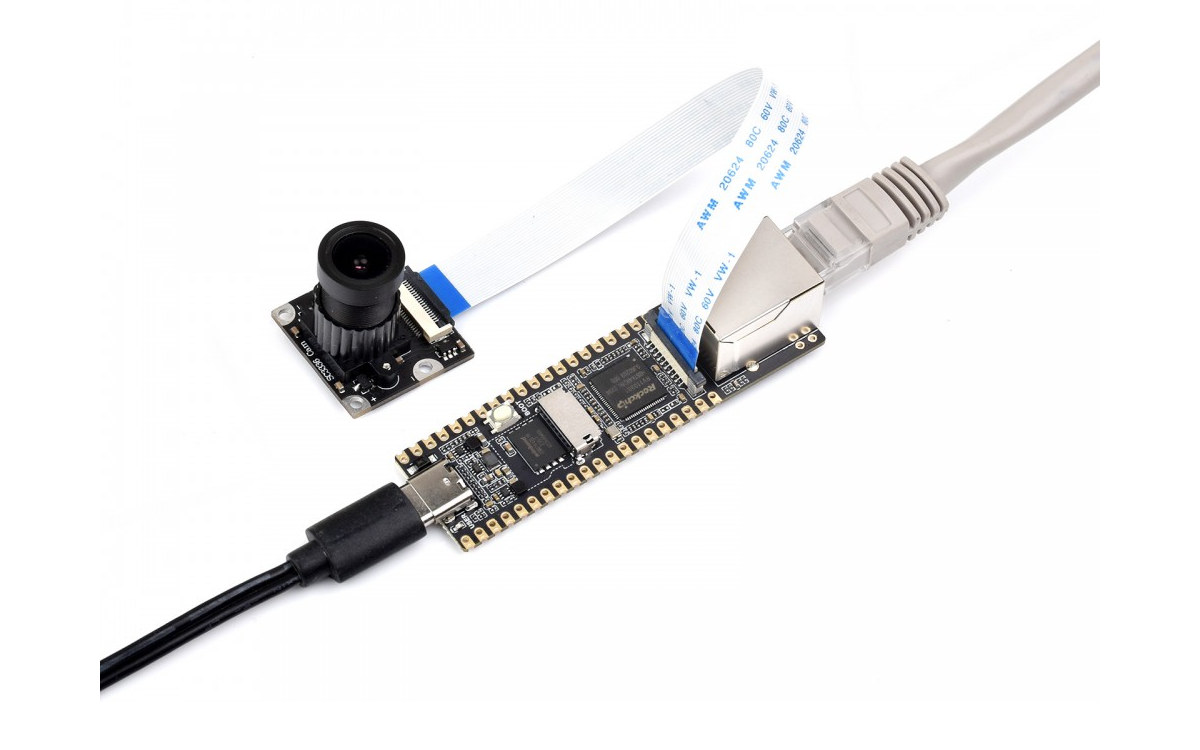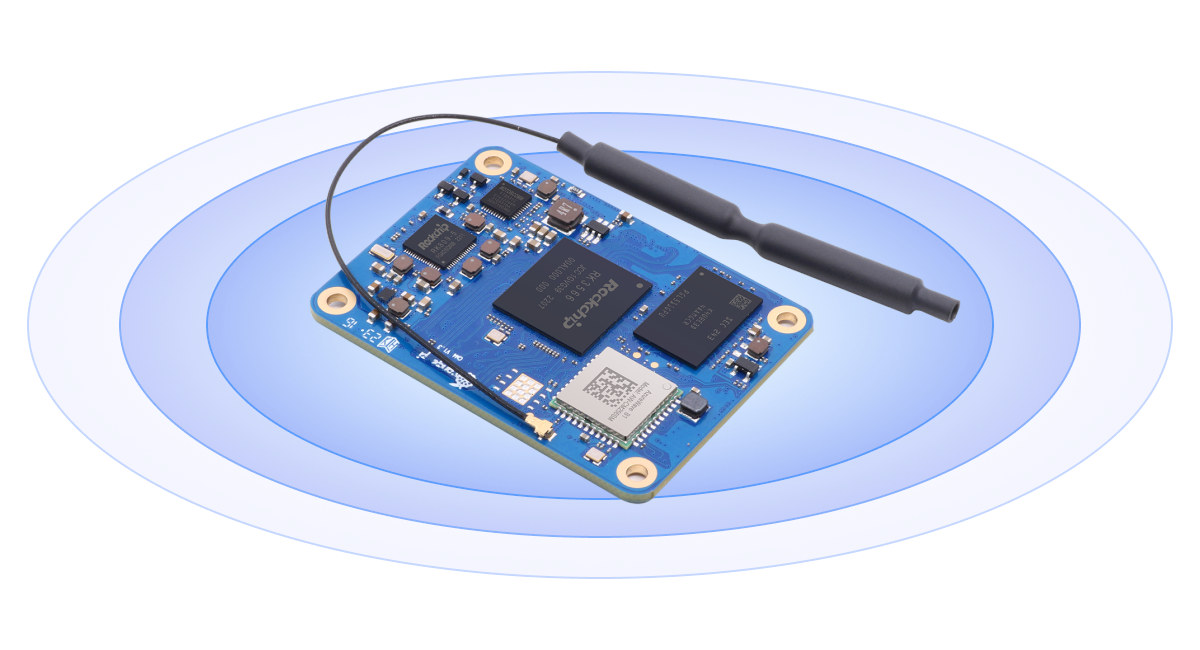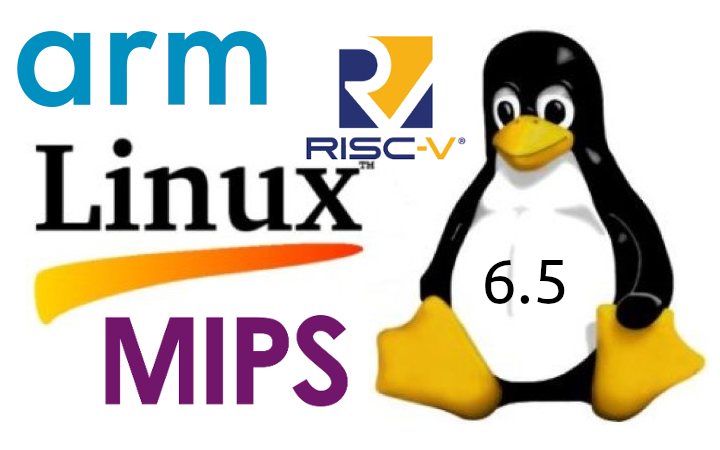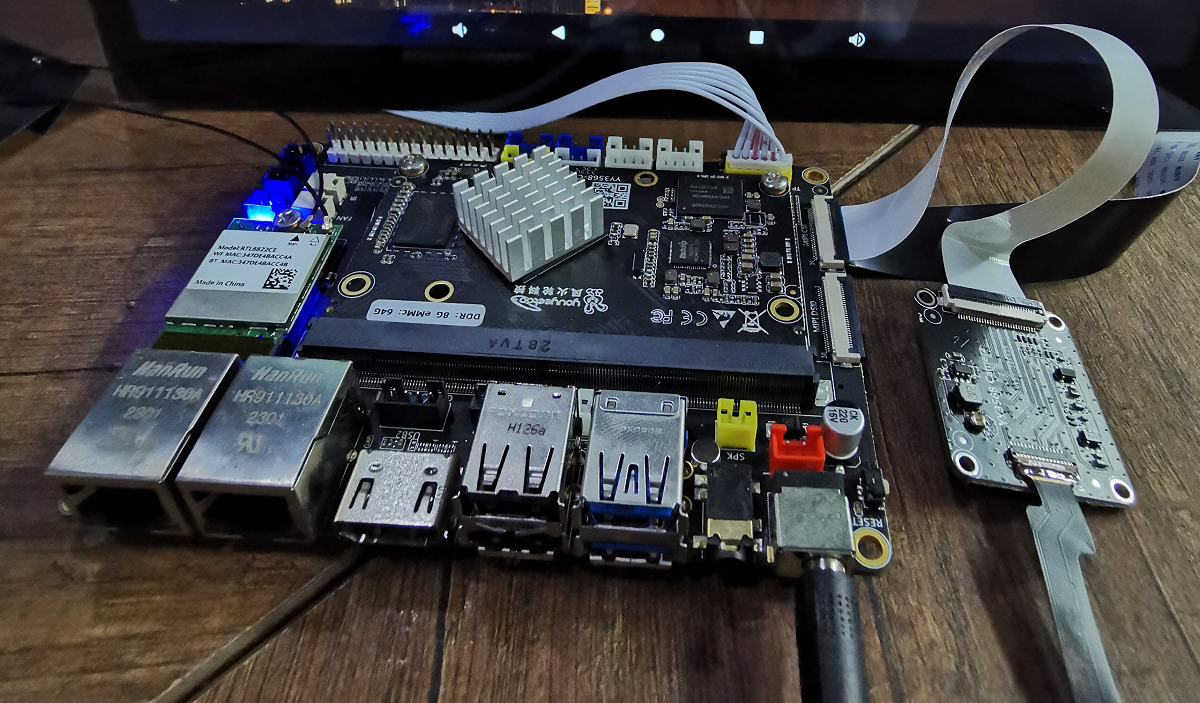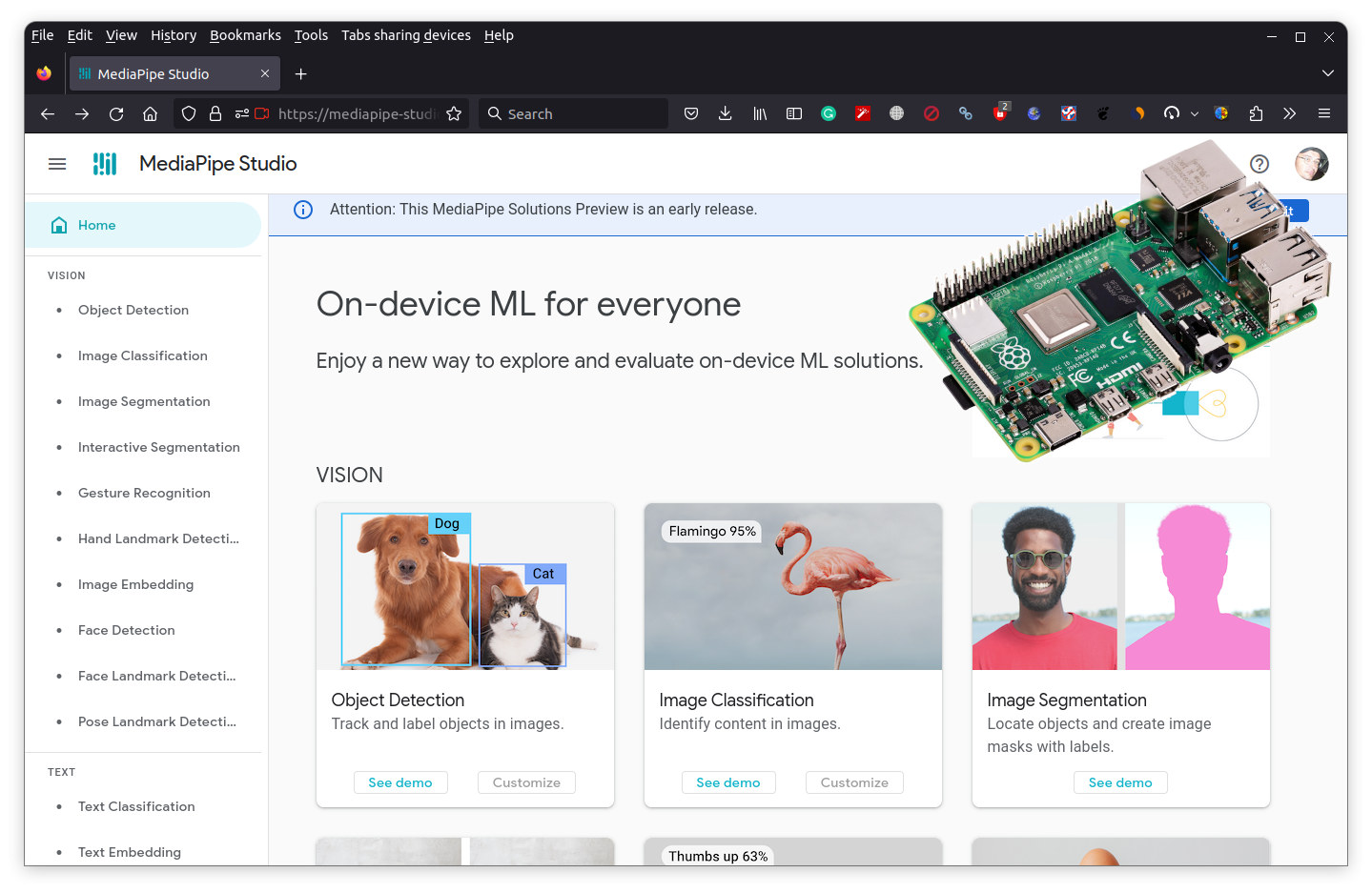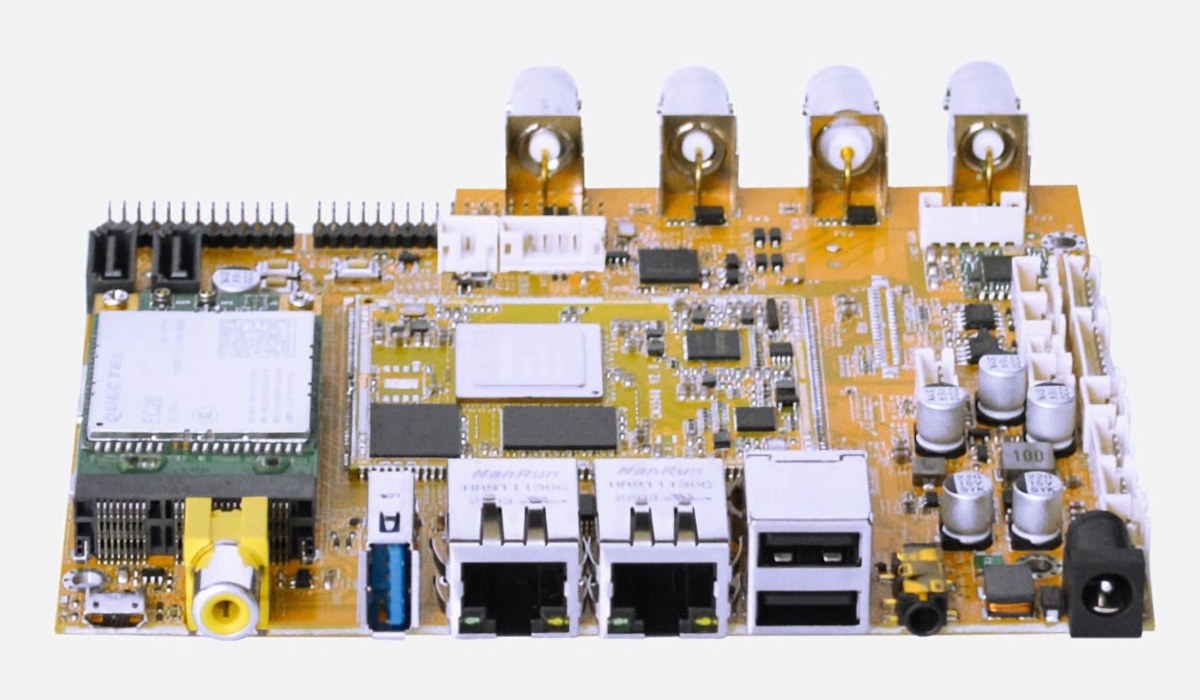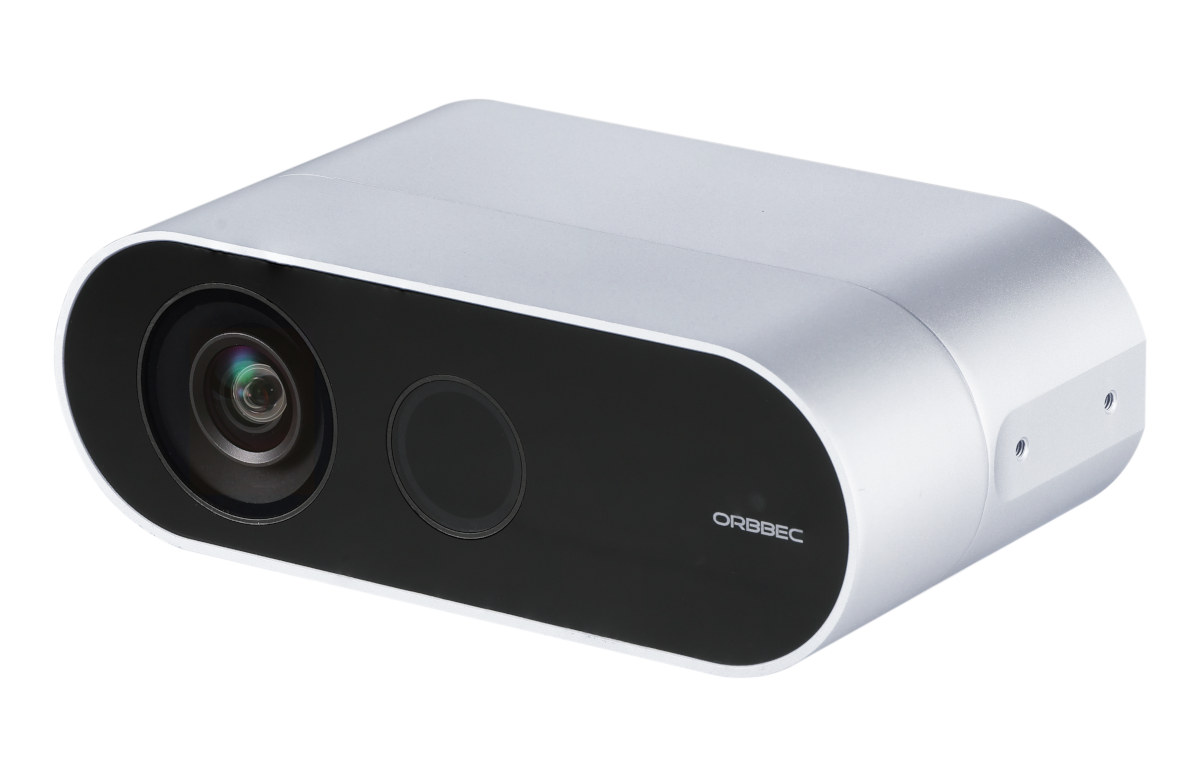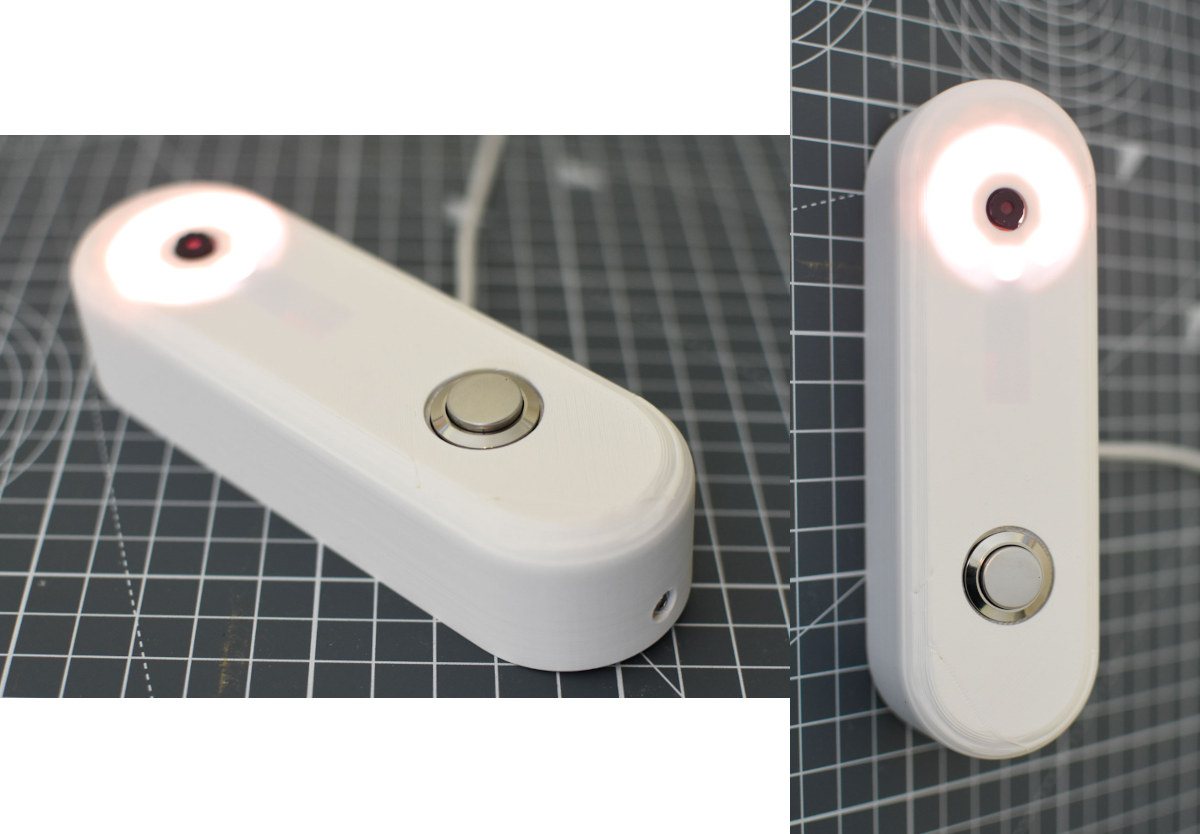LuckFox Pico is a small Linux camera board based on the Rockchip RV1103 Cortex-A7 and RISC-V AI camera SoC and offered with an Ethernet port in a longer version of the PCB called LuckFox Pico Plus. Both models come with 64MB RAM (apparently embedded in RV1103), a microSD card slot for storage, a MIPI CSI camera connector, a USB Type-C port for power, and a few through holes for expansion through GPIO, I2C, UART, and so on. LuckFox Pico and Pico Plus specifications: SoC – Rockchip RV1103 with Arm Cortex-A7 processor @ 1.2GHz, RISC-V core, 64MB DDR2, 0.8 TOPS NPU, 4M @ 30 fps USP Storage MicroSD card slot LuckFox Plus only – 1Gbit (128MB) SPI flash (W25N01GV) Camera – 2-lane MIPI CSI connector Networking (LuckFox Pico Plus only) – 10/100M Ethernet RJ45 port USB – USB 2.0 Host/Device Type-C port Expansion – 2x 20-pin headers with up to 24x […]
Orange Pi Compute Module 4 – A low-cost Rockchip RK3566-powered alternative to Raspberry Pi CM4
Orange Pi Compute Module 4 is a system-on-module mechanically and electrically compatible with the Raspberry Pi CM4, but powered by a Rockchip RK3566 quad-core Arm Cortex-A55 AI processor just like the Radxa CM3 introduced a few years ago, or more recently the Banana Pi BPI-CM2 (RK3568). The new module, also called Orange Pi CM4 for shorts, comes with 1GB to 8GB RAM, 8GB to 128GB eMMC flash, and an optional 128/256MBit SPI flash, as well as a Gigabit Ethernet PHY and on-board WiFi 5 and Bluetooth 5.0. It comes with the two 100-pin high-density connectors found on the Raspberry Pi CM4, and a smaller 24-pin connector for extra I/Os. Orange Pi Compute Module 4 specifications: SoC – Rockchip RK3566 quad-core Arm Cortex-A55 processor @ 1.8 GHz with Arm Mali-G52 2EE GPU, 0.8 TOPS AI accelerator, 4Kp60 H.265/H.264/VP9 video decoding, 1080p100f H.265/H.264 video encoding System Memory – 1GB, 2GB, 4GB, or […]
Linux 6.5 release – Notable changes, Arm, RISC-V and MIPS architectures
Linus Torvalds has just announced the release of Linux 6.5 on the Linux Kernel Mailing List (LKML): So nothing particularly odd or scary happened this last week, so there is no excuse to delay the 6.5 release. I still have this nagging feeling that a lot of people are on vacation and that things have been quiet partly due to that. But this release has been going smoothly, so that’s probably just me being paranoid. The biggest patches this last week were literally just to our selftests. The shortlog below is obviously not the 6.5 release log, it’s purely just the last week since rc7. Anyway, this obviously means that the merge window for 6.6 starts tomorrow. I already have ~20 pull requests pending and ready to go, but before we start the next merge frenzy, please give this final release one last round of testing, ok? Linus The earlier […]
Youyeetoo YY3568 devkit review – Part 1: Unboxing, specifications, and Android 11 testing
Youyeetoo has sent us a review sample of their YY3568 “Bundle 5” devkit with the Rockchip RK3568-powered YY3568 SBC, an 11.6-inch touchscreen display, a MIPI camera module, and all accessories required to get started. We were especially interested in using it to play with the 1 TOPS NPU in the Rockchip RK3568 in Linux, but we’ll start the Youyeetoo YY3568 review with an unboxing, some specifications, and a quick review with Android 11 before switching to Debian 10 in the second part of the review. Youyeetoo YY3568 devkit unboxing The YY3568 single board computer itself is comprised of a carrier board and a YY3568-Core board with a Rockchip RK3568 processor, as well as 8GB RAM, 64GB eMMC flash, and WiFi 5 and Bluetooth 5.0 module. The board is suitable for various applications from generic computing to video playback and AI workloads. YY3568 SBC specifications and hardware overview Youyeetoo YY3568 board […]
MediaPipe for Raspberry Pi released – No-code/low-code on-device machine learning solutions
Google has just released MediaPipe Solutions for no-code/low-code on-device machine learning for the Raspberry Pi (and an iOS SDK) following the official release in May for Android, web, and Python, but it’s been years in the making as we first wrote about the MediaPipe project back in December 2019. The Raspberry Pi port is an update to the Python SDK and supports audio classification, face landmark detection, object detection, and various natural language processing tasks. MediaPipe Solutions consists of three components: MediaPipe Tasks (low-code) to create and deploy custom end-to-end ML solution pipelines using cross-platform APIs and libraries MediaPipe Model Maker (low-code) to create custom ML models MediaPipe Studio (no-code) webpage to create, evaluate, debug, benchmark, prototype, and deploy production-level solutions. You can try it out directly in your web browser at least on PC and I could quickly test the object detection on Ubuntu 22.04. MediaPipe Tasks can be […]
Rockchip RK3568 SBC takes up to four AHD cameras, two SATA drives
Boardcon EM3568-AV CAM SBC is powered by a Rockchip RK3568 SoC and comes with four AHD (analog high-definition) camera connectors and two SATA 3.0 ports to store video data on hard drives. The SBC is also equipped with up to 8GB RAM, up to 128GB eMMC flash, supports MIPI DSI, LVDS, and eDP displays, and features a video composite output, two Gigabit Ethernet ports, WIFi 4 connectivity, an optional 4G LTE module, a few USB ports, and several connectors for expansion. Boardcon EM3568-AV CAM specifications: SoC – Rockchip RK3568 CPU – Quad-core Cortex-A55 processor @ up to 2.0 GHz GPU – Arm Mali-G52 2EE GPU with support for OpenGL ES 1.1/2.0/3.2, OpenCL 2.0, Vulkan 1.1 AI accelerator – 1 TOPS NPU (probably rounded up from 0.8 TOPS) VPU – 4Kp60 H.265/H.264/VP9 video decoding, and 1080p60 H.265/H.264 video encoding System Memory – 2GB (up to 8GB) Storage 8GB eMMC flash (up […]
Orbbec Femto Bolt 3D depth and RGB USB-C camera supports Microsoft ToF technology
Orbbec Femto Bolt is a 3D depth and RGB USB-C camera developed in collaboration with Microsoft and integrating the same ToF (Time-of-Flight) technology as found in the Microsoft Azure Kinect camera module and HoloLens 2 mixed reality head-mounted display. The new model follows the launch of the fully integrated Femto Mega featuring an NVIDIA Jetson Nano module introduced in January with the same ToF technology, so the new USB-C camera simply allows a wider selection of hosts. Orbbec has also launched the Femto Mega I variant with an IP65 metal enclosure. Orbbec Femto Bolt specifications: Cameras Depth camera 1 Mega Pixel ToF sensor 850nm wavelength 0.25 to 5.45m range depending on the depth mode Up to 1024×1024 @ 15 fps (WFoV) or 640×579 @ 30 fps (NFoV) FoV Wide – H: 120°; V: 120° Narrow – H: 75°; V: 65° RGB camera 4K resolution up to 3840×2160 @ 25 fps […]
Privacy-focused DIY video doorbell leverages ESP32-CAM board, ESPHome firmware, Home Assistant
Seeing the lack of privacy-focused video doorbells on the market, Tristam (aka ThatGuy) decided to design his own doorbell with an ESP32-CAM board purchased from Amazon and flashed with ESPHome open-source firmware for easy integration with Home Assistant so there’s no need to rely on third-party cloud services. The DIY design also comes with other off-the-shelf parts with a momentary push button, a 10kΩ resistor, an RGB LED ring light, M2.5 brass inserts and screws, and a 10-meter micro USB cable all of which can be purchased from Amazon or another shop. He also needed eSUN white PETG filament to 3D print the custom plastic enclosure. The assembly requires two wires to the push button for 3.3V and GPIO 14 pulled to the ground with the 10k Ohm resistor and three wires to the RGB LED ring (5V, GND, GPIO15). Tristam notes the RGB LED ring is optional, and the […]


